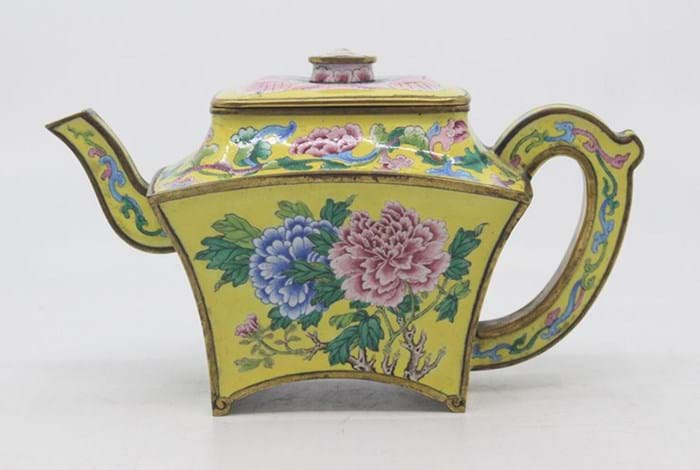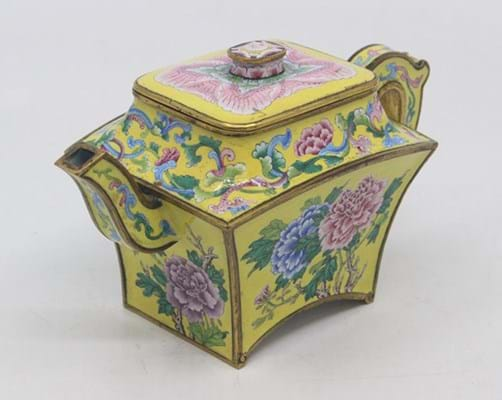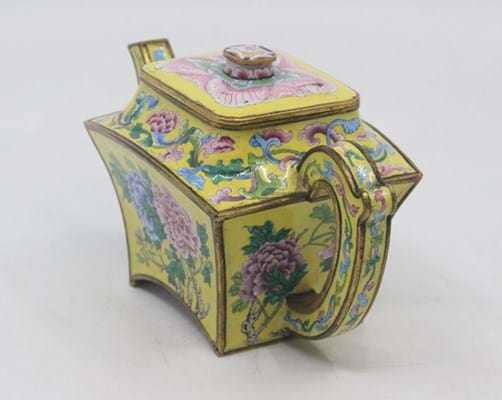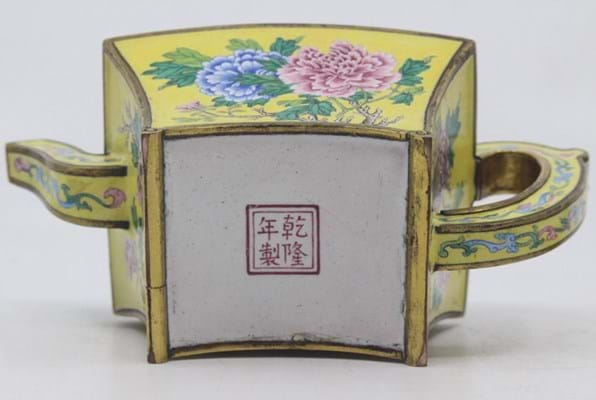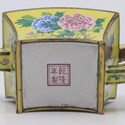Auctioneer Charles Hanson welcomed phone bidders from China and Hong Kong to the Etwall saleroom to compete for a diminutive imperial treasure that came for sale from a South Derbyshire family.
Its owner, a semi-retired manual worker, believed it had been acquired by his grandfather while stationed in the Far East during the Second World War. It had recently been stored in a garage but was sent for valuation after some research during lockdown pointed to a similar vessel sold at Sotheby’s.
In a colourful pre-sale monologue, Hanson told bidders at the auction on September 24 that the firm could guarantee the provenance thanks to photographs of the ewer and cover in the family home in the 1970s.
He opened bidding at £100,000 (some distance above the estimate of £20,000-£40,000) and took increments of £10,000 from half a dozen bidders before bringing down the hammer 12 minutes later for a price that, with 25% premium added, is close to £490,000.
Three almost identical 6in (15cm) wine pots are known: the example in the National Palace Museum in Taipei, another the Palace Museum in Beijing and a third sold at Sotheby’s Hong Kong in April 2010 for a premium-inclusive HK9.62m (£1m). All are brightly decorated on a lemon-yellow ground with colourful blooming peonies in hues of pinks, blues and purples and have a four-character Qianlong (1735-99) reign mark in puce.
Foreign missionaries first taught the technique of enamelling on metal to Chinese artisans during the Kangxi period. By the reign of his grandson the craft had reached perfection with forms and designs often reflecting Qianlong’s extravagant and lavish taste. This particular vessel is a close copy of a Kangxi prototype.
Hanson said: “This has to be the best lockdown find. It is such an exciting discovery, an imperial 18th century wine ewer which would have graced a palace and was, perhaps, handled by the emperor Qianlong himself.”


